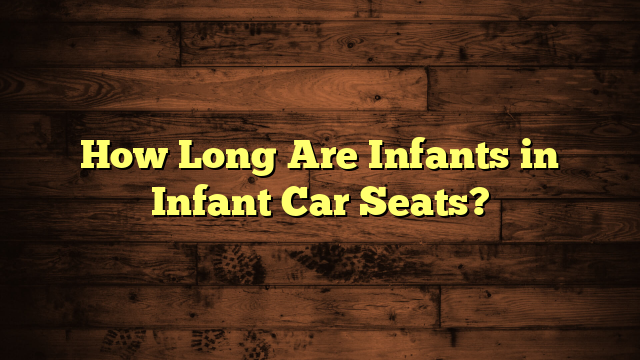Can Car Seats Go in the Middle Seat?
You might be surprised to learn that placing a car seat in the middle seat can actually enhance your child's safety during a drive. While many parents default to the side seats, the middle position often offers better protection from side-impact collisions and can improve installation with the vehicle's seat belts. However, not all vehicles are equipped to safely accommodate a car seat in this spot. Understanding the specifics can make a significant difference in keeping your child secure, so it's worth exploring the factors that influence this decision.
Key Takeaways
- Yes, car seats can be placed in the middle seat, which is generally the safest position for children.
- The middle seat reduces the risk of injury from side-impact collisions and minimizes distractions from other passengers.
- Ensure the middle seat has proper anchor points and is compatible with the car seat type for secure installation.
- Follow the vehicle's manual for airbag guidelines, as active airbags can pose risks to children in car seats.
- Regularly check the car seat installation, ensuring it is stable and harness straps are snug for optimal safety.
Importance of Car Seat Placement
When it comes to car seat placement, the middle seat often stands out as the safest option for your child. This position provides significant advantages regarding car seat safety, primarily due to its distance from side-impact collisions. By placing your child in the middle seat, you're reducing their risk of injury in case of an accident, as this seat is typically the furthest from the doors.
Moreover, the middle seat allows for better installation of the car seat itself. Most vehicles have a lap-and-shoulder belt system in the middle, which can secure the car seat more effectively and minimize movement during a crash. You also avoid potential distractions from other passengers when your child is in the center, leading to a calmer ride.
Additionally, the middle seat gives you the flexibility to manage other rear-seat passengers more easily. It can become a shared space for siblings or friends, while still prioritizing your child's safety.
Pros of Using the Middle Seat
The middle seat offers several compelling advantages for parents choosing where to install a car seat. One of the most significant safety advantages is the distance from both sides of the vehicle. This position reduces the risk of side-impact collisions, which can be particularly dangerous for young passengers. By placing the car seat in the middle, you provide an added layer of protection that enhances your child's overall safety.
Additionally, the middle seat often allows for better weight distribution in the vehicle. This can lead to improved handling and stability, especially in emergencies.
Comfort factors also come into play. When your child is in the middle, they may feel more secure and less cramped than in an outboard seat, giving them a sense of safety during the ride.
Moreover, you'll find it easier to buckle and unbuckle your child from the middle seat, especially in tight parking spaces.
Cons of Using the Middle Seat
While many parents appreciate the advantages of the middle seat for car seats, there are notable downsides to contemplate.
First, one of the main middle seat challenges is the installation process. The middle seat can be narrower than side seats, making it tricky to secure a car seat properly. You might find it difficult to achieve the right angle, which is vital for your child's safety.
Additionally, safety risks can increase in the middle seat, especially in older vehicles lacking proper anchor points or LATCH systems. In the event of a collision, the middle seat may not provide the same level of protection as the sides, where doors can absorb some impact.
Moreover, if you have multiple kids, getting a car seat into the middle can be a hassle, often requiring you to squeeze and maneuver, which isn't always easy.
Finally, the middle seat can limit accessibility; getting your child in and out becomes a challenge, especially in tight parking spaces.
Car Seat Types and Compatibility
When it comes to choosing a car seat, understanding the different types and their compatibility with the middle seat is essential.
You'll want to know which seats fit securely and how to install them properly for maximum safety.
Let's explore the options and guidelines to guarantee your child is safe and comfortable on every ride.
Types of Car Seats
Choosing the right car seat is vital for your child's safety, and understanding the various types is the first step. There are three primary car seat categories: infant seats, convertible seats, and booster seats.
Infant seats are designed for newborns and small babies, providing rear-facing support until they outgrow the seat. Once your child reaches the appropriate weight or height, you can shift to a convertible seat.
Convertible seats offer versatility since they can be used in both rear-facing and forward-facing positions, accommodating your growing child for several years.
When your child is ready to sit in a seatbelt, booster seats come into play. These seats elevate your child, ensuring that the vehicle's seatbelt fits them properly across the chest and lap.
It's important to choose a booster seat that's compatible with your vehicle and meets safety standards.
Middle Seat Compatibility
Many parents wonder about the compatibility of car seats in the middle seat of their vehicle. Understanding middle seat safety is vital, as this position can offer added protection during a collision.
However, not all car seats fit well or are approved for use in the middle. Many vehicles have different seat shapes, belt configurations, and anchor placements that can affect how securely a car seat can be installed.
Car seat regulations often specify that certain types of seats, like infant carriers or convertible seats, must be installed following specific guidelines. For example, some car seats may require a tether that isn't available in the middle seat.
Furthermore, the seatbelt system in the middle may not provide the same level of security as the outboard positions, so it's important to check your vehicle's manual for compatibility information.
Before making a decision, always consult your car seat manual and your vehicle's owner guide.
If you're unsure, you can reach out to a certified child passenger safety technician for personalized advice. They can help guarantee that your car seat is installed correctly and safely, regardless of where it's positioned in your vehicle.
Installation Guidelines and Tips
Understanding how to install car seats properly is key to guaranteeing your child's safety, especially in the middle seat.
With the right installation techniques, you can enhance car seat safety considerably. Here are some essential tips to help you out:
- Read the Manuals: Always check both the car seat manual and your vehicle's owner manual for specific instructions on installation.
- Use the Right Anchor: Secure the car seat using either the seat belt or LATCH system, guaranteeing it's tightly fitted without any movement.
- Check the Angle: For infants, the car seat should be reclined at the correct angle, usually between 30 to 45 degrees, to support their head and neck.
- Regularly Inspect: Periodically check the car seat's installation to guarantee it hasn't loosened over time, especially if you frequently move it or change vehicles.
Vehicle Safety Features to Consider
When choosing a vehicle for your family, it's essential to take into account safety features like seat belt configuration and airbag placement.
These elements can greatly impact how well your car seat fits and protects your child. Understanding these details helps guarantee you're making the best choice for safety on the road.
Seat Belt Configuration
Choosing the right car seat for the middle seat means paying close attention to the seat belt configuration in your vehicle. The type of seat belt you have can considerably impact middle seat safety, so it's important to grasp how they work together.
Here are some key factors to keep in mind:
- Lap-Shoulder Belt: This is the safest option, as it provides support across your child's body and helps secure the car seat properly.
- Lap Belt Only: If your middle seat has only a lap belt, it may not be suitable for certain car seats designed for a lap-shoulder belt.
- Seat Belt Locking Mechanism: Verify the seat belt locks securely to hold the car seat in place. Some vehicles have a locking feature that can help prevent movement.
- Adjustability: Check if the seat belt can be adjusted to fit snugly against the car seat, guaranteeing a tighter fit for maximum safety.
Airbag Placement Considerations
Airbags play a significant role in enhancing vehicle safety, especially when it comes to securing a car seat in the middle seat. When you're considering the middle seat for your child's car seat, it's important to think about airbag deployment. Many vehicles have front and side airbags designed to protect adult passengers, but these can pose risks to young children in car seats. If a side airbag deploys, it might strike the car seat, potentially causing injury.
Safety regulations often recommend that children under a certain age or weight shouldn't be placed in a seat with an active airbag. Always check your vehicle's manual for specific guidelines regarding airbag placement and car seats. If your vehicle has an off switch for passenger airbags, it may allow for safer placement options for a car seat.
Furthermore, the center seat may not always be the safest option if it's adjacent to sides with active airbags. Be sure to evaluate your vehicle's airbag system and consult safety resources to guarantee you're following best practices for your child's safety on the road.
Expert Recommendations for Parents
Placing your child's car seat in the middle seat can greatly enhance their safety during travel. Expert advice consistently emphasizes that this position provides the most protection against side impacts.
To guarantee you're adhering to safety standards, consider the following recommendations:
- Check Compatibility: Make sure your car seat is compatible with your vehicle's middle seat. Not all car seats fit every car.
- Secure Installation: Properly install the car seat using either the seat belt or LATCH system, ensuring it's snug and doesn't move more than an inch.
- Age and Size Guidelines: Follow the manufacturer's guidelines regarding age and weight limits. Keep your child in their car seat for as long as possible.
- Regular Inspections: Periodically check the installation and condition of the car seat. Make adjustments as your child grows.
Tips for Safe Installation
Securing your child's safety during travel is a priority that starts with proper car seat installation. To achieve this, you should familiarize yourself with effective installation techniques and perform regular safety checks. Here are some essential tips to keep in mind:
| Installation Techniques | Safety Checks |
|---|---|
| Read the car seat manual | Verify tight fit (less than 1 inch of movement) |
| Use the right seat belt path | Check harness straps for snugness |
| Secure car seat with LATCH | Verify seat angle is correct |
| Position the car seat correctly | Inspect for signs of wear/damage |
| Test stability after installation | Confirm expiration date of the seat |
When using the middle seat, verify the seat is compatible with your specific car model. After installation, give it a firm shake to check stability. Regularly inspect the car seat to verify it remains in good condition, and adjust harness straps as your child grows. Remember, a properly installed car seat can greatly reduce the risk of injury in an accident. Make these checks part of your routine to keep your child safe on the road.
Frequently Asked Questions
Can I Use a Booster Seat in the Middle Seat?
You can use a booster seat in the middle seat, and it often provides advantages like increased safety. Just make sure it fits properly, as booster seat safety is essential for your child's protection.
What if My Car Doesn't Have a Middle Seat?
If your car doesn't have a middle seat, you'll need to explore car seat alternatives. Always prioritize safety regulations to guarantee your child's protection. Options like side seating can still offer secure accommodations for car seats.
Are There Weight Limits for Middle Seat Car Seats?
Yes, there are weight restrictions for car seats in the middle seat. Always check the manufacturer's safety guidelines to verify your car seat meets the necessary weight limits for maximum safety and compliance.
Should I Anchor a Car Seat in the Middle Seat?
Did you know that the middle seat is often the safest spot in a car? Always follow safety guidelines and installation tips to secure your car seat there, ensuring maximum protection for your little one.
Can I Install Two Car Seats in the Middle Seat?
You can install two car seats in the middle seat, but make certain to follow safety guidelines and seek installation tips. Check your vehicle's manual for space and compatibility to guarantee a secure fit.
Conclusion
In summary, placing your car seat in the middle seat can greatly boost your child's safety during travel. While there are advantages and challenges, weighing these factors carefully will help you make the best choice for your family. Remember, it's better to be safe than sorry, so confirm your car seat is compatible with your vehicle and installed correctly. With the right precautions, you can hit the road with confidence, knowing your little one is secure.
- Can I Get in a Taxi Without a Car Seat? - January 26, 2025
- Can I Get Chlamydia From a Toilet Seat? - January 26, 2025
- Can I Get an Uber With a Car Seat? - January 26, 2025






